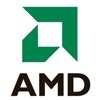
Intel, ATI, NVIDIA - fight for the share
While Intel and ATI continue to dominate the overall graphics controller market, NVIDIA increased its sales by 25 percent in a quarter.
The analyst firm that compiles the table below estimates that approximately 68,4 million graphics controllers were sold in the third quarter of 2005, up 11,6 percent from the previous quarter and 8,2 percent from the same period last year.
Despite the tremendous success of integrated solutions, market-leading Intel’s share has declined somewhat, but their sales have continued to grow. ATI still holds second place with 8,8 percent sales growth, but its share has shrunk by about six-tenths of a percentage point.
Thus, NVIDIA made the biggest progress: its sales increased by 24,9 percent and its market share increased by 1,9 percentage points.

Of the aforementioned 68,4 million graphics units, approximately 50,9 million were made for desktops during the third quarter, of which approximately 30,7 million, or approximately 60,3 percent, were placed in chipsets. For desktop systems, total sales increased 9,8 percent, while the loss of built-in graphics cores increased 9,4 percent.
Thus, for desktop systems, Intel's share was 36,9 percent, ATI's 23,6 percent and NVIDIA's 22 percent, so it is clear that the gap between the main rivals is much smaller in the area that is most important to us. A good indication of NVIDIA’s catching-up is that while they sold 28,3 percent more products for desktops in the third quarter, ATI grew by only 7,6 percent during that time.
As for portable systems, about 17,4 million video controllers were made for them, of which about 12,6 million were found in the northern bridges of laptops. Overall, handheld imaging was 17,1 percent more successful in the third quarter than three months earlier, while integrated units grew 25,8 percent here. So it's clear that despite the advent of the AXIOM and MXM, integrated solutions are becoming more popular on mobile devices, including the ATI Radeon Xpress 200M, which has allowed ATI to deliver 40 percent more chipsets with integrated graphics cores to laptops. However, this was also not enough to get the title of most mobile integrated chipset company from Intel, which has been the world’s largest semiconductor manufacturer since early 2005.













